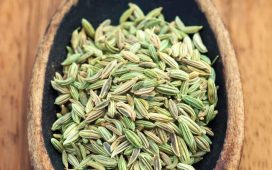Well, that escalated quickly. Perhaps, the correct thing to say is that I trust this government with my money. Which is why even though I am gutted by the news that all my ₹2,000 notes will become worthless from October, I am sure the good folks in government know what they are doing.
Come September 30, though, I am not giving up my ₹2,000 notes, all two of them. No, I’m not some kind of nut who takes them out of a secret place where the sun never shines and says ‘Preciousss!’ while admiring them. But truth be told, the ₹2,000 denomination is the most beautiful Indian currency that ever folded in wallets and crossed hands.
The experts and the government – not always the same thing – have explained why it’s been sent to the Great Big Money Bin in the Sky. More or less for the same reason why GoI made the ₹1,000 and ₹500 notes illegal tender overnight on a fine November night in 2016: to tackle black money. But it wasn’t black money I was happy to see the back of. The old ₹500 banknote had a jaundiced colour to it, while the ₹1,000 one, with its salmon pink sandstone hue, was a little childish for my taste.
The new ₹500 note’s moss green colour, rendering the image of the Red Fort on it into a haunting citadel, is lovely, especially with its crisp white borders. (The same can’t be said about the lurid purple ₹100 note that has funny money written all over it.)
But then, came the monetisation of ₹2,000 on November 10, 2016. The 66 mm x 166 mm paper that 2,000 rupees sat in, like a burnish’d throne, was a gorgeous, breathstealing sight. It was worthy, and a bit more, of being the highest valued currency in the land.
It is also where my love affair with magenta – a colour whose name I had heard but never encountered – began. Named after the Italian town of Magenta in Lombardy after a battle fought nearby that the French-Italian troops won against Austria in 1859, finally meeting ‘red-purple’, was epiphanic. Like VS Naipaul first encountering daffodils in England, flowers that he had only read about in books growing up in Trinidad without knowing how they looked, I saw magenta for the first time in the ₹2,000 note. It was a coup de foudre. It was also wonderfully futuristic – unlike the earlier dosh depicting 50s-era tractors and 20s-era bullocks and old monuments done to death. The image of Mangalyaan, the Mars Orbiter Mission craft, floating above a visible sliver of Martian surface and yet simultaneously tethered to palpable rectangular paper, was a triumph of illustration and design. The finest Mughal miniature finally found its match in the ₹2,000 banknote’s reverse side.
Then, there’s the subtle strip running at the base of the note like a celluloid reel showcasing the recurring but randomised motifs of ‘elephant, peacock, lotus’. The currency note suddenly held the intimacy and playfulness that the most majestic of ancient temples bear at the base of their pillars.
The obverse side of the note, even with that single face that all rupee notes bear (as if he is a brand ambassador of money), has its backdrop delicately filigreed with magenta and white patterns. Every time I took out ₹2,000 notes from the ATM, it was like visiting the Louvre.
Apparently, with more and more people using modes of digital payment, and ₹2,000 not really the vast majority’s currency of choice as far as exchanging it for goods and services is concerned, its popularity reached an all-time low. But then, when has great works of art satisfied the philistines?
With the ₹2,000 pulled out for reasons that must be worthwhile, I shall keep my two. I plan to frame one and hang it next to the 1925 illustration of ‘The Golden Castle of Stromberg’ by Arthur Rackham. Pity the name of the artist of ‘ ₹2,000’ will remain anonymous.









